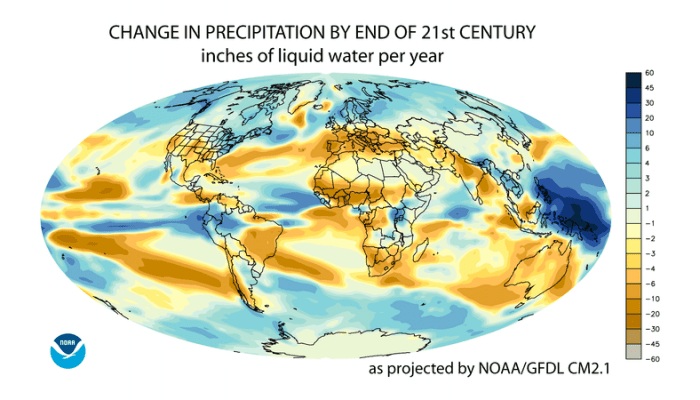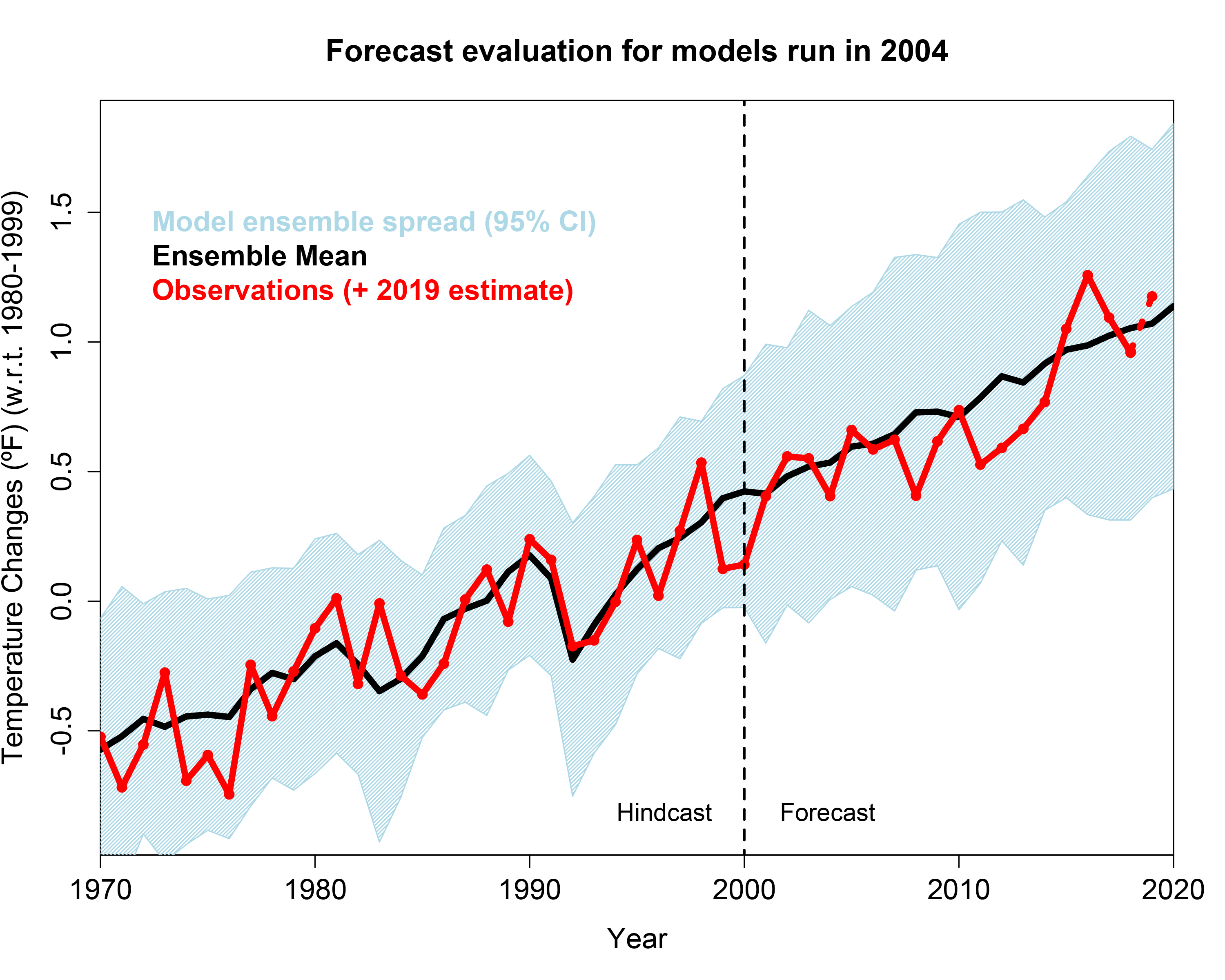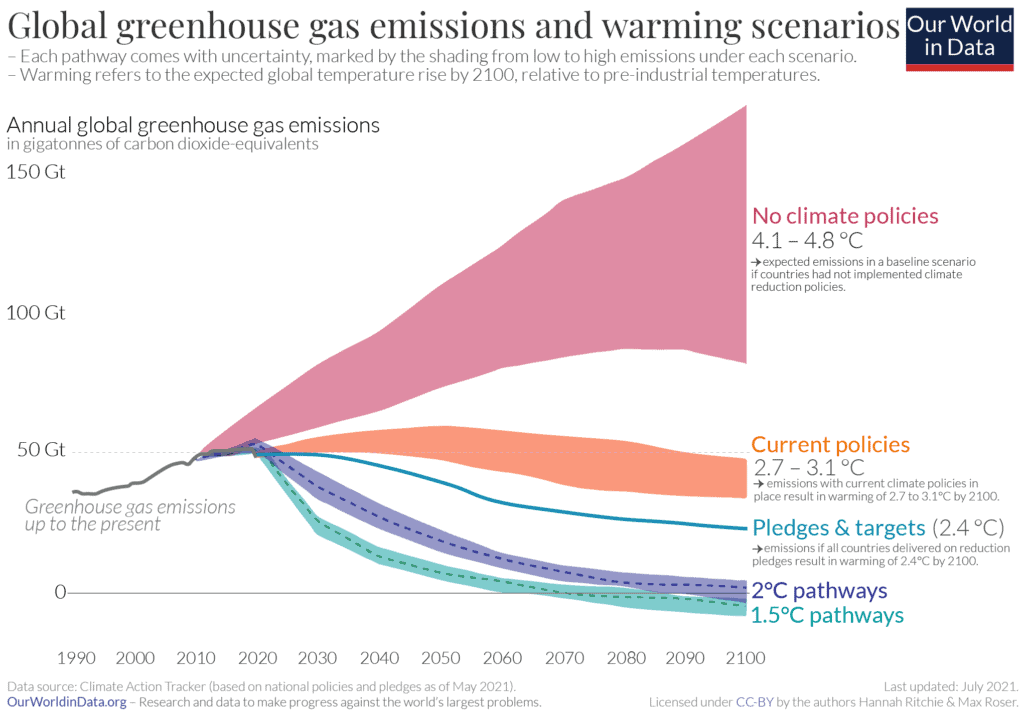Our planet’s climate is an enormously complex topic. Sure, the underlying principles are straightforward, but incorporating the interplay between all the different elements is a very hard task. To assess the large-scale situation, researchers often turn to something called climate models.
A climate model is a quantitative simulation of the elements in our planet’s climate. When researchers develop models, they divide the planet into a grid, apply known equations from the parameters they consider, and “run” the model to evaluate the results. Models can be more or less detailed, can extend into the past or into the future, and can be localized or planetary.

Filling in the gaps
Climate models are essential tools for climatologists as they try to make sense of the complex dynamics of the Earth’s climate system. One reason for that is that we don’t have access to all the data. We’ve started observing the planet’s climate relatively recently, we haven’t covered the whole planet with meteorological instruments, so there are a lot of gaps in our climate data. Models can help fill in those gaps.
Official temperature records started in 1880 in the UK and the surface observations grew in time to become the integrated system we have today with satellites, buoys, aircraft, and stations around the planet.
But although our ability to gather data has improved substantially, especially with the advent of satellite data, the planet is so big that even with all these data points we have, there are still plenty of gaps to fill in.

It’s important to dive into the concept of climate. Officially, the World Meteorological Organisation defines climate as “the measurement of the mean and variability of relevant quantities of certain variables (such as temperature, precipitation or wind) over a period of time, officially stated within 30 years”.
In other words, climate is why people in the Caribbean have almost no warm jackets; weather, on the other hand, is what’s going on today. Weather is one event, climate is a long-term trend.
Complexity

topography at a resolution of 87.5 × 87.5 km; (b) same as (a) but for a resolution of 30.0 × 30.0 km. Source: IPCC
Part of the reason why models are so complicated is that they need to incorporate multiple types of data. Climate models need to be a good representation of the physical world, which involves things like winds, currents, chemistry, and many, many more.
This means we can’t use a model that approximates the oceans to just giant swimming pools. Oceans have currents and other complex mechanisms that play a role in governing the climate — and a comprehensive model would need to incorporate these elements. which are vital to understanding the climate.
Resolution is also a problem. Models can’t have crude representations, you can’t make a climate model that assumes the Andes Mountains are just a bunch of rectangular walls in coastal South America — we need a better resolution for our model to be accurate.
It’s like Lego sculptures, if you have many small bricks you can make a good Millennium Falcon, a few large bricks won’t be able to build the ship’s round shape. Resolution increased over the years, because now we have better computers to do the math.
However, it doesn’t mean that the older models didn’t make good predictions — quite the opposite. Models from 1970 to 2007 have proved consistent with the global mean surface temperatures observed. Still, models which incorporate more parameters and have a better resolution) tend to produce better results.
Are they good enough?
No model is a perfect representation of reality. But they don’t need to be, and can still help us understand how our planet’s climate will evolve.
One way to test a climate model is using old data and checking if it “predicts” climate phenomena we already knew happened. Simply put, you pretend that you’re building the model some years ago, and see if it successfully predicts something that’s already happened. This is called a “hindcast”, as opposed to a “forecast”. Here’s an example.
In 1991, there was a global impact eruption in Mount Pinatubo; its volcanic ashes reached 35 km in the atmosphere. Scientists knew the number of ashes would be enough to cool the atmosphere. James Hansen and his team took the opportunity to validate their climate model, to see if it was good enough it would show the cooling effect.
With 6 months of real data after the eruption, the scientists could compare the temperatures of the model and the observations. The results were almost as they expected — the model did predict a cooling effect; it wasn’t a perfect prediction, but it was good enough. Despite the complexity of simultaneous events on the global scale, the climate model has an accurate tendency of cooling.

Scenarios
Models are a way to make an experiment, we can’t actually test whether the effects of CO2 emissions on the atmosphere by filling it with the gas, we don’t have an atmosphere in a lab for testing, so we model and simulate scenarios. You get the equation and add the amount of CO2 emissions per year, the model gets the number and works with it to tell you how much the temperature will rise.
That is what the IPCC scenarios are for. These scenarios are the ‘ifs’: “if we continue emitting the same amount of greenhouse gases(GHG) we are emitting now, what happens?”, “if we increase GHG emission, what happens?”, and “if we reduce GHG emission, what happens?”. These scenarios are then used to predict different periods, in the near 20 years, a mid-term within 40 years from now, and the longer-term within 100 years.
With these scenarios, we can decide our actions for the future and find solutions to avoid extreme climate events like the recent ones. Since we have climate models to help us we must act, because there is no doubt humanity is the cause of the negative impact on the climate.
So what do the models tell us for the future?
We’re in the middle of a global warming effect, and there is overwhelming evidence that we are causing this, through our emissions of greenhouse gases. These gases are heating up the atmosphere, which in turn, heats up the entire planet.
The models can tell us a lot of specifics regarding how this will unfold (spoiler alert: it’s bad), and what we can do to stop it. For instance, models suggest that if we don’t take any action, our planet will experience a heating of over 4 degrees Celsius. With current policies, we’re heading for around 3 degrees Celsius, and if all countries keep their current pledges and targets, we’re headed for 2.4 degrees.

However, the models also show that if we go over 2 degrees, we’re already causing catastrophic damage to the planet. Since we’re already at one-degree heating since before the Industrial Age, our best bet would be to keep heating to within 1.5 degrees. The models also show how we can do that, but whether we as a society actually come together and do it is a whole different question.
In essence, climate models are a tool. They’re a tool to help us better understand the planet, the effects that we are having on it, and how we can address the damage we’re causing. They’re not perfect, but they’re extremely useful, and we’d be wise to keep an eye on them as we navigate the dangers of a heating climate.






